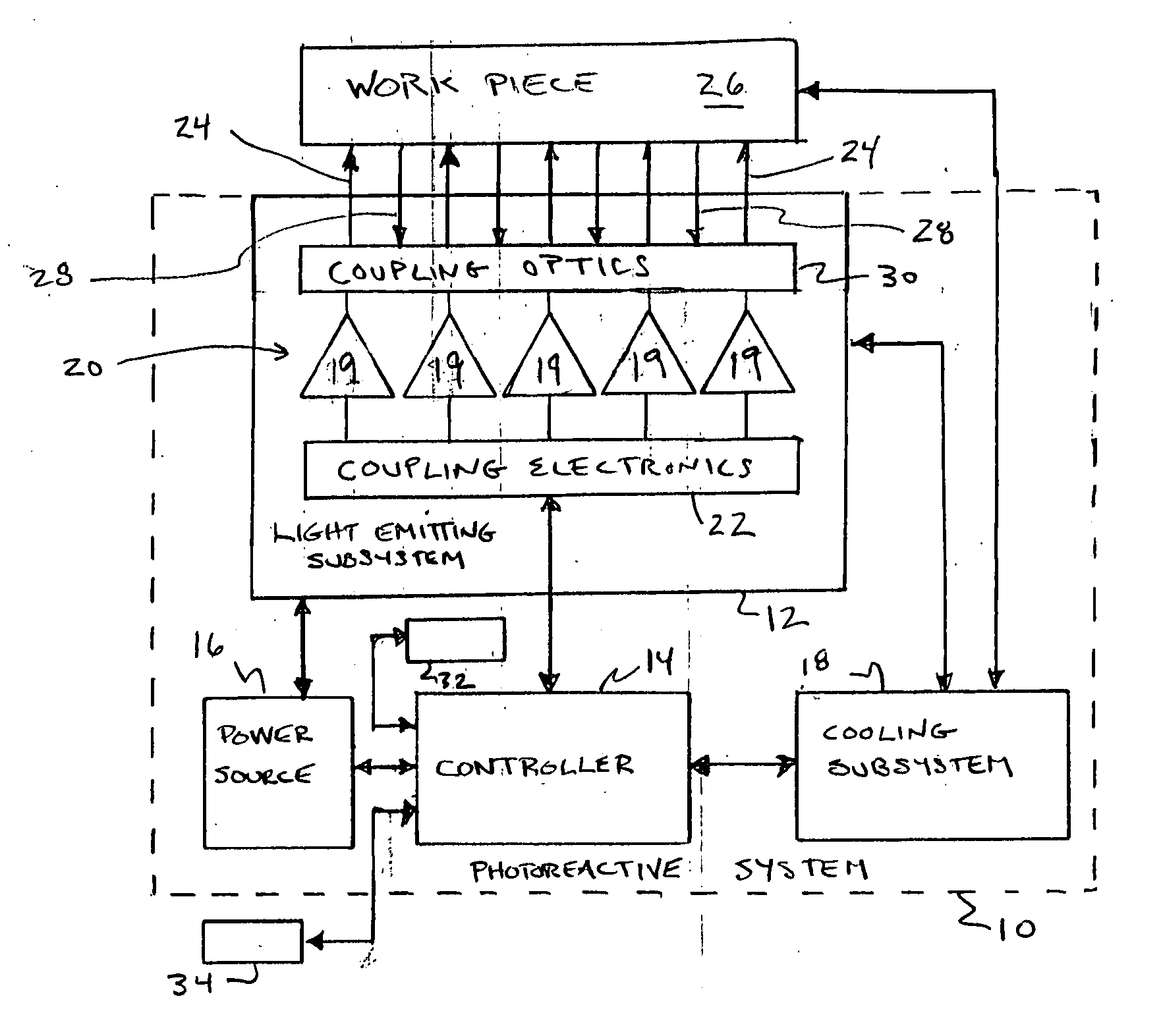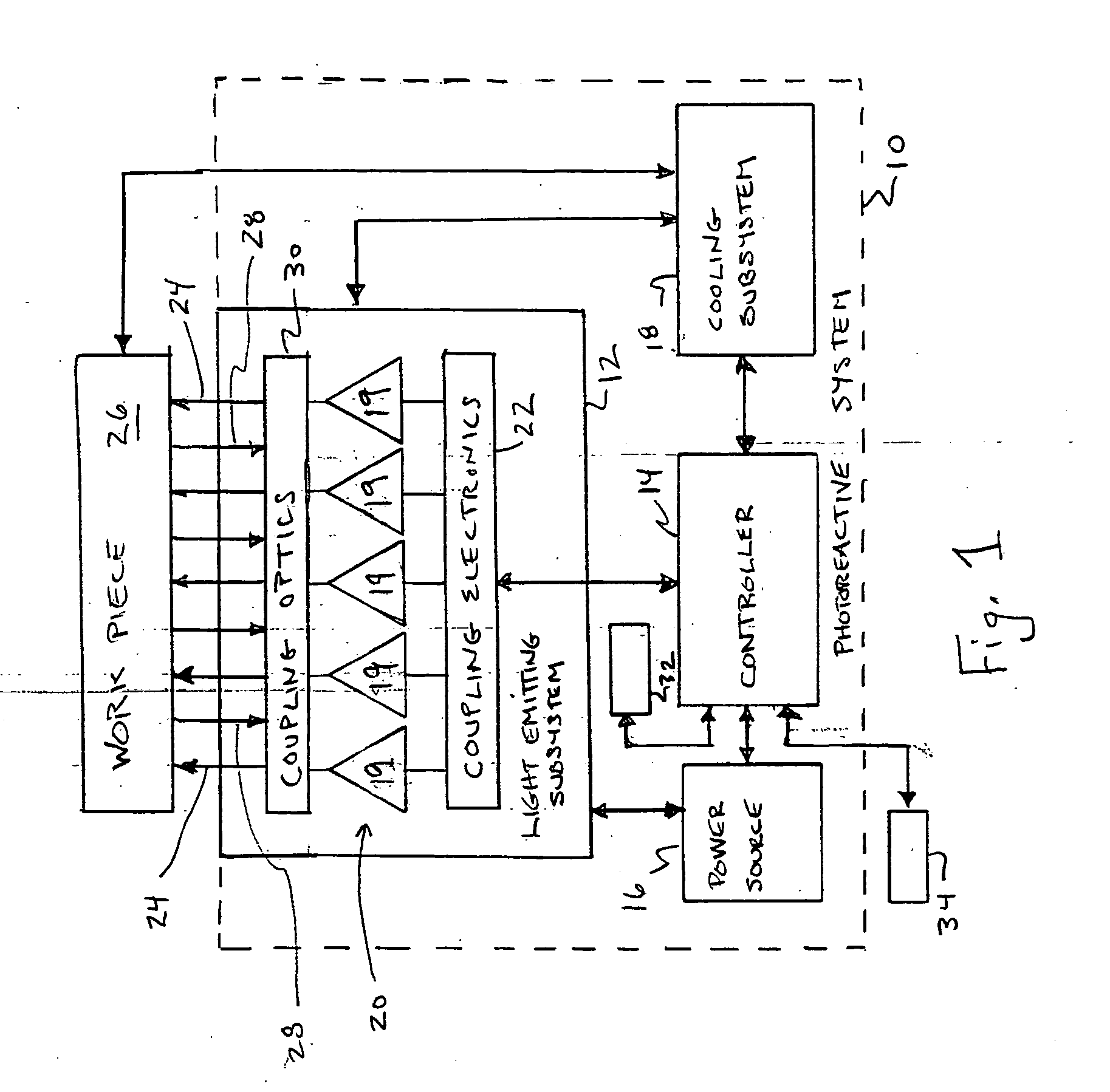LED array having array-based LED detectors
an array-based led detector and led array technology, which is applied in the direction of instruments, material analysis, electroluminescent light sources, etc., can solve the problems of sensor inability to determine the improper radiant output of the led array, the array may be operating improperly with respect to either/both the application parameters or/and the array's specifications, and the sensor cannot make adjustments except, so as to achieve no reduction or loss of total radiant flux
- Summary
- Abstract
- Description
- Claims
- Application Information
AI Technical Summary
Benefits of technology
Problems solved by technology
Method used
Image
Examples
Embodiment Construction
[0034] Representative embodiments of the present invention are shown in FIGS. 1-7 wherein similar features share common reference numerals.
[0035]FIG. 1 is a block diagram of a photoreactive system 10 in accordance with the invention. In this example embodiment, the photoreactive system 10 comprises a light emitting subsystem 12, a controller 14, a power source 16 and a cooling subsystem 18.
[0036] The light emitting subsystem 12 preferably comprises a plurality of semiconductor devices 19. Selected of the plurality of semiconductor devices 19 are implemented to provide radiant output 24. The radiant output 24 is directed to a work piece 26. Returned radiation 28 may be directed back to the light emitting system 12 from the work piece 26 (e.g., via reflection of the radiant output 24).
[0037] The radiant output 24 preferably is directed to the work piece 26 via coupling optics 30. The coupling optics 30, if used, may be variously implemented. As an example, the coupling optics may i...
PUM
 Login to View More
Login to View More Abstract
Description
Claims
Application Information
 Login to View More
Login to View More - R&D
- Intellectual Property
- Life Sciences
- Materials
- Tech Scout
- Unparalleled Data Quality
- Higher Quality Content
- 60% Fewer Hallucinations
Browse by: Latest US Patents, China's latest patents, Technical Efficacy Thesaurus, Application Domain, Technology Topic, Popular Technical Reports.
© 2025 PatSnap. All rights reserved.Legal|Privacy policy|Modern Slavery Act Transparency Statement|Sitemap|About US| Contact US: help@patsnap.com



